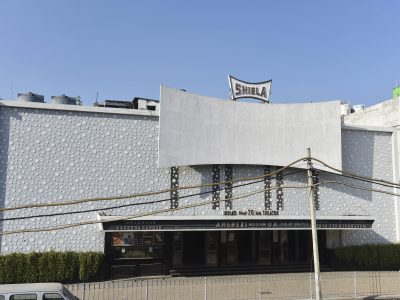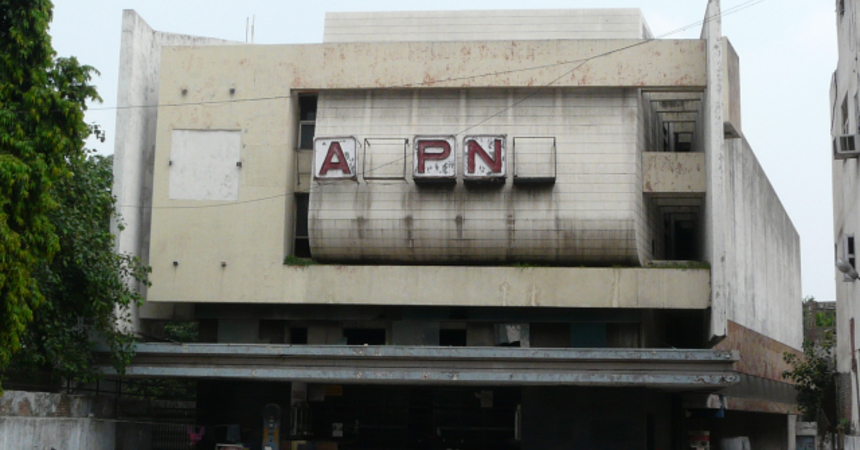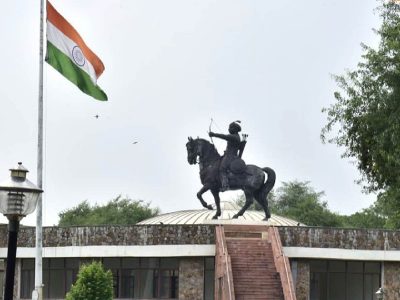The recent advertisement ‘Property for sale – Alpana cinema’ in a leading Delhibased newspaper has sparked a wave of nostalgia among cinephiles, coinciding with news of veteran actor Mithun Chakraborty’s hospitalisation in Kolkata.
The connection between Alpana and Chakraborty runs deep, as the cinema was the venue for several of the actor’s blockbuster films, including Mrigaya (1976), Surakshaa (1979), and Boxer (1984), all of which received overwhelming response from fans. A PILLAR OF DELHI’S CINEMATIC HISTORY Established in 1967 on the main road of Model Town, Alpana Cinema quickly became a landmark in the Capital’s entertainment landscape.
It commenced its cinematic journey with the gripping suspense thriller Hamraaz, featuring acclaimed actors such as Sunil Dutt, RaajKumar, and Mumtaz. The “electric atmosphere” during the premiere of Hamraaz in 1967 is vividly recalled by Harish Khanna, a longtime resident and former professor at Delhi University.
“The mood was electric, and people from Model Town, Vijay Nagar, Hakikat Nagar, and other nearby areas were coming to watch the movie in a brand-new cinema hall,” he recalls.

further solidified its place in Delhi’s cinematic history with the grand screening of Meena Kumari’s timeless classic Pakeezah in 1972. Within a couple of days of the film’s release, Meena Kumari succumbed to her prolonged illness of liver cirrhosis, leaving the nation shocked. As fans thronged the nearest cinema halls to catch final glimpses of the actor on the big screen, they began parroting a dialogue of Pakeezah – ‘Aapke paon dekhe, bahut haseen hai…inhe zameen par mat utaariega… mailay ho jayenge (Your feet are gorgeous, do not plant them on the ground for they would be blemished).”
Senior journalist Ziya Us Salam, in his book ‘Delhi 4 Shows’, recounted that the premiere of Pakeezah at Alpana saw a ‘tumultuous welcome’ for music director Naushad and marked a significant milestone for the cinema.
He has written in his book, “In the premier of Pakeeza at Alpana, music director of the film Naushad came in a black Mercedes to a tumultuous welcome from the crowd that had assembled there to have the glimpses of stars.” Despite its illustrious past, Alpana Cinema now faces an uncertain future, with reports suggesting that the iconic building may be replaced by a shopping mall.
This development marks yet another closure in Delhi’s once-thriving cinema landscape, which has seen the demise of numerous theatres over the years. ‘MORE THAN JUST A HALL’ In its heydays, Alpana Cinema, along with Jagat (Jama Masjid) and Odeon (Connaught Place), stood as one of the premier venues showcasing cinematic masterpieces in the Capital.

However, while Alpana’s legacy remains, Jagat has long been shuttered, and Odeon has been unofficially closed for over two years. The success of films like Pakeezah at Alpana prompted the management to
innovate, such as organising bus services from key points in North Delhi to ferry eager moviegoers to the cinema hall. This initiative was particularly significant at a time when public transportation, notably the DTC, was notoriously unreliable, and the concept of a Metro Rail system had not yet materialised.
For cinephiles like former Censor Board member Aruna Mukim, Alpana was more than just a cinema hall; it was a cherished destination for family outings. “We preferred Alpana because it attracted a lot of families, unlike other cinema halls in North Delhi like Amba (Shakti Nagar), Deep (Ashok Vihar), and Robin (Sabzi Mandi),” she reflects.
Mukim fondly recalls frequenting Alpana with her family and friends before her marriage in 1989, and even after relocating to Civil Lines, she continued to visit the cinema with her husband and children countless times, highlighting the enduring appeal of Alpana across generations.
Alpana held a special significance for legendary actor Dev Anand, as many of his iconic films garnered an enthusiastic response from the audience. Classics like Munimji, Hum Dono, Guide, and Jewel Thief, among others from the Navketan Films banner, graced the screens of Alpana and were adored by the Delhi audience.
While films like Kala Bazar (1960), Guide (1965), and Jewel Thief (1967) debuted before Alpana’s inception, the cinema repeatedly showcased these timeless classics, captivating audiences with each screening. FATE OF SINGLE-SCREENS The closure of Alpana echoes a larger trend of single-screen cinemas shutting down across the Capital. Over the years, Delhi has witnessed the closure of several iconic theaters, marking the end of an era when moviegoing was a cherished form of entertainment.
One such landmark was the Palace cinema, whose ruins stand as a sombre reminder of its once-vibrant presence on Roshanara Road. Often hailed as the second picture hall in the Capital to boast a 70mm screen after Shiela, Palace played a significant role in shaping Delhi’s cinema culture. Another notable closure was that of Shiela cinema, a beloved fixture in central Delhi for 56 years until its closure in 2017. Established in January 1961, Shiela was renowned as the country’s first cinema to feature a 70mm screen.
With a seating capacity of 980, it offered p a t r o n s a c i n e m a t i c experience like no other, complemented by its trendy interiors that were the epitome of style in its heyday. Shiela’s allure extended beyond it’s cinematic offerings; it was also a favoured venue for film premieres, drawing the likes of Amitabh Bachchan and other Bollywood luminaries.

The memories of attending premieres, such as that of Trishul, linger fondly for many who reminisce about the theatre’s golden days. In contrast to Shiela’s quiet exit, the closure of Regal cinema in 2017 was a grand affair. The iconic theatre bid farewell with a houseful screening of actor-director Raj Kapoor’s timeless classics, Mera Naam Joker and Sangam, marking the end of an illustrious chapter in Delhi’s cinematic history.
Over the past decade, the closure of more than three dozen theatres in Delhi has marked a significant shift in the city’s cinematic landscape. Among them, Regal stood as a titan in New Delhi, its foundations dating back to 1932. Not merely a cinema hall, Regal served as a versatile venue, hosting ballets, plays, and the latest talkies, earning its place as a cultural hub.
Regal was also the site of theatrical premieres for both Bollywood and Hollywood films. In 1940, the Indian premiere of the Academy Award-winning Gone with the Wind captivated audiences within its walls, setting a precedent for many cinematic milestones to come.
Additionally, numerous RK banner films made their premieres at this esteemed theatre.
Situated in Connaught Place, Regal was a pioneer in screening Hindi films, carvingout a niche amid competitors like Chanakya, which emerged in the 1970s. Similarly, Golcha cinema, another bastion of Delhi’s cinematic history, has also bid adieu. Mughal-e-Azam was released there.
For cinephiles residing in the Jamnapaar region, reminiscing about theatres like‘Radhu’ and ‘Gianand’ in Shahdara, and Radhu Palace in Laxmi Nagar, evoke a sense of nostalgia. Swaran in Vishwas Nagar holds a special place, despite its tragic demise in the antiSikh riots of 1984.
Recalling the fervour surrounding screenings of Amitabh Bachchan’s Laawaris, older patrons fondly remembers the bustling crowds at Gianand, where buying a ticket often entailed navigating through throngs of enthusiastic moviegoers, prompting police intervention.
Amid these closures, Radhu Palace stands out for its memorable screening of Punjabi classic Nanak Naam Jahaz Hai, which resonated not only with Punjabi audiences but also with non-Punjabis, thanks to stellar performances and soulstirring music.
Reflecting on these lost treasures, social worker Balbir Singh ‘Vivek Vihar’ muses on the emotional impact of Rafi Sahib’s rendition of Mitr pyaare nu, underscoring the enduring power of music and cinema to evoke profound emotions.
As Alpana joins the fate of Kamal, Archana, Rachna, New Amar Talkies, Naaz, and others, consigned to the annals of history, their legacy lives on in the hearts and minds of devoted cinema aficionados.




